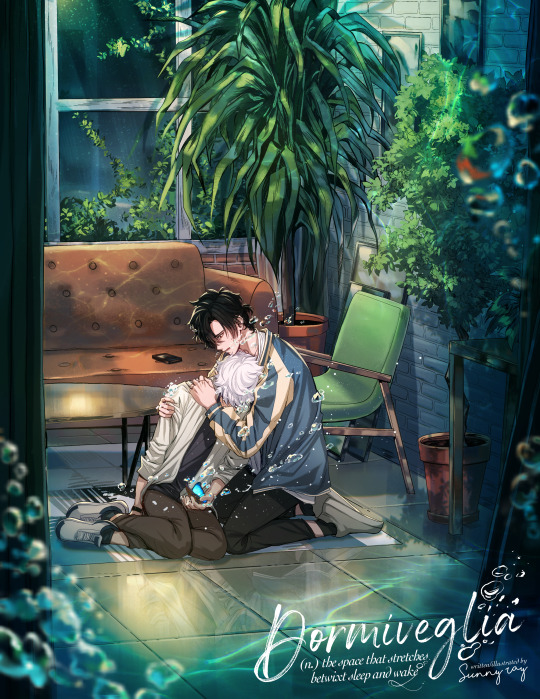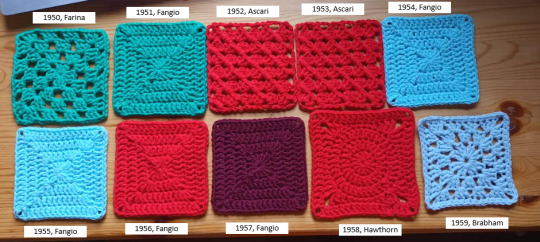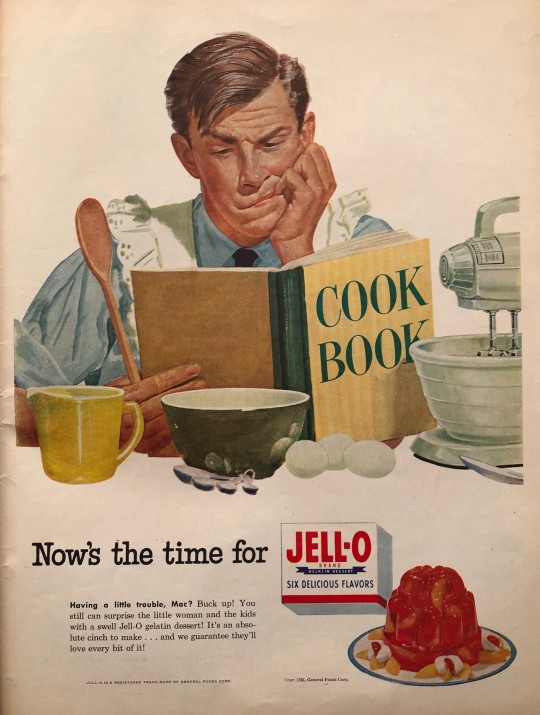#1952-53
Explore tagged Tumblr posts
Text


Simonetta-Visconti Haute Couture Collection Fall/Winter 1952-53. Dorian Leigh in evening dress.
Simonetta-Visconti Collection Haute Couture Automne/Hiver 1952-53. Dorian Leigh en tenue de soirée.
Photo Genevieve Naylor Rome 1952.
#alta moda#haute couture#simonetta-visconti#fashion 50s#1952-53#fall/winter#automne/hiver#dorian leigh#genevieve naylor#rome#vintage fashion
43 notes
·
View notes
Text


Hubert de Givenchy F/W 1952-53 haute couture rose needlepoint jacket
#Hubert de Givenchy#Givenchy#Givenchy haute couture#vintage Givenchy#vintage Hubert de Givenchy#F/W 1952-53#A/W 1952-53#vintage haute couture#fashion history#needlepoint
3 notes
·
View notes
Video
1952 North American T-28 Trojan N238V 189-53 USAF 52-1238 by Chris Murkin Via Flickr: 1952 North American T-28 Trojan N238V 189-53 USAF 52-1238 Photo taken at EAA Airventure Wittman Regional Airport Oshkosh Wisconsin USA July 2024 DAF_4601
#Air#Show#Z9#1952#American#T-28#Trojan#N238V#189-53#USAF#52-1238#PLANE#Prop#NIKON#Display#EAA#Airventure#Oshkosh#Wittman#Wisconsin#AIRCRAFT#AEROPLANE#Aviation#Airshows#Photo#Trainer#Air Show#North American#EAA Airventure#Photographic
1 note
·
View note
Text

Day 54- Film: What Price Glory?
Release date: August 22nd, 1952.
Studio: 20th Century Fox
Genre: War
Director: John Ford
Producer: Sol C. Siegel
Actors: James Cagney, Corinne Calvet, Dan Dailey
Plot Summary: During the later part of WWI, American Troops in France are getting younger and less experienced. Captain Flagg requests help training the green young men, but when that help arrives, it is his old nemesis, Sergeant Quirt. The rivalry between them heats up even more when they both fall for the same French girl.
My Rating (out of five stars): ** ½
This may not have been the worst film on my list so far, but it was without question the hardest to sit though. It wasn’t fortuitous for this film to line up as the one to watch directly after The Quiet Man- both are John Ford comedy dramas with an excessive running time and lots of macho men bonding while drinking and fighting. I find all of that a bore, honestly. I didn’t really care about the characters, and the film seemed torn over whether or not to question war or glorify it.
The Good:
I liked the fact that there was a lot of French spoken in the film, and it wasn’t subtitled or cut down too much.
There was some sentiment that popped up occasionally about the futility of war or the cost of sending very young men to fight, but it often got undercut by other parts of the film. This was not a film that glamorized war, however, which I appreciated.
The Bad:
It’s ridiculous for a stunningly beautiful young French girl to be torn between a funny looking short pudgy guy of about 50, and a 40-ish guy who isn’t much more attractive. Looks and age are not everything, I know, but this just felt unbelievable.
All the macho bullshit that I’ve discussed already today and yesterday.
Like The Quiet Man, this was too long.
Like The Quiet Man, the characters were not developed well at all.
The French girl Charmaine could literally have been a mannequin. I can’t think of one single personality trait or interest she had, except for her love of soldiers. I guess she sang a couple of songs, so I’d infer she likes music?
The other French girl character- she is supposed to be a schoolgirl of 17 who starts seeing a 22-year-old American soldier. They gave the actress pigtails and put minimal make up on her, and I swear she looked about 14 years old. It was creepy.
Normally I like James Cagney a lot, but I didn’t like him in this. He just kind of swung from being blandly gruff to gratingly gruff. At times it gave the impression that he was just phoning it in.
I didn’t really understand or get invested in the rivalry between Cagney and Dailey, even after they fell for the same woman.
Dailey is also an actor that can be very appealing, but I found him hard to like here.
This was supposed to be a comedy/drama, but I did not find much funny in it at all.
0 notes
Text

Gas Station (1952-53) in Wiesbaden, Germany, by Lothar Götz
#1950s#gas station#concrete#architecture#germany#nachkriegsarchitektur#nachkriegsmoderne#architektur#wiesbaden#lothar götz
550 notes
·
View notes
Text

🌊 Dormiveglia Master Post
Rating: T (SFW)
(CW: drowning, blood, feelings of depression and helplessness, existential dread)
Updates: Biweekly on Tuesdays (PST) (Sometimes Weekly) (Unless stated otherwise)
Timeline: Written Post S2, Pre-Yingdu Chapter/S3
🌊 Pages:
Pages 1-2 Pages 3-4 Pages 5-7 Pages 8-9 Pages 10-11 Pages 12-13 Page ??? Pages 14-15 Pages 16-17 Pages 18-19 Pages 20-21 Pages 22-23 Pages 24-25 Pages 26-27 Pages 28-29 Pages 30-34 Pages 35-36 Pages 37-38 Pages 39-40 Pages 41-42 Pages 43-44 Pages 45-46 Pages 47-48 Pages 49-50 Pages 51-52 Pages 53-54 Pages 55-56 Pages 57-58 Pages 59-60 Pages 61-63 Pages 64-65 Pages 66-67 Pages 68-69
(Ongoing)
Anticipated length: 72 Pages (may be changed)
🌊 Short Sci-fi Stories referenced:
Ray Bradbury's "A Sound of Thunder" 1952 Edward Page Mitchell's "The Clock That Went Backward" 1881 Robert F. Young's "The Dandelion Girl" 1961
🌊 Full Illustrated Pieces
Cover Can't you weather the storm you've wrought? Are we falling...or flying? Underneath a blue sky, we yearn. Sinking, Sinking... Desire or D̴̟͖̙̲̗̮͈̹̞̬͉͎͎̋̚͝ͅẹ̶̖̬̣̎̆̉̐ś̶̛͉͙̜̮̲̯͉͙͎͇͖̪̩̻̩̋̅̅͌̽p̴̧̢̬̳̗̝͕͎͔͍̳͗͛̒̓̄ͅͅa̸̜̮͐̒͐̉̀͆͐͐̒ȋ̷̢͙̬̜͙̹͎̅̅̅̾̅r̸̮͕̠̗͘? Proof Fever Stricken "I'll be Devoted to you for the rest of my life regardless of fate, I'll rewrite the rules of this world to say your name," "So stay for an eternity if you want, if you need, the world can go on without us. And when the world eventually ends, only we will remain."
🌊Music Playlist
I created a music playlist of songs that inspired some of the panels/artworks or that I listened to on repeat that probably influenced the comic in some way
You can listen to it here on this youtube playlist!
🌊AO3 Version
You can now read the current Dormiveglia pages on AO3!
🌊Where else can I read this?
Instagram (There is no good sorting system on Instagram I am so sorry) Twitter Patreon (I have yet to compile all of the public pages yet) My website
🌊 Additional Information
I'll be sharing early access pages, notes, time-lapses, and the process of creating this manga on my patreon!
You can also find this manga on Twitter where I am more active!
809 notes
·
View notes
Text

London
Robert Frank, 1952-53
221 notes
·
View notes
Text

Alfa Romeo Disco Volante
1952-53 Italy
165 notes
·
View notes
Text

Mark Rothko in his West 53rd Street studio, painting what may be a version of Untitled, 1952–53, c. 1953, Photo by Henry Elkan The Rothko Family Archives
#mark rothko#markrothko#rothko#daily rothko#dailyrothko#abstract expressionism#modern art#abstraction#colorfield#ab ex#colorfield painting#mid century
172 notes
·
View notes
Text

Takako Yamaguchi (Japanese, 1952), Magnificat #3, 1984. Oil and bronze leaf on paper, 53 5⁄8 x 83 ¾ in.
140 notes
·
View notes
Text

Simonetta-Visconti Haute Couture Collection Fall/Winter 1952-53. Dorian Leigh in a formal dress.
Simonetta-Visconti Collection Haute Couture Automne/Hiver 1952-53. Dorian Leigh dans une robe formelle.
Photo Genevieve Naylor Rome 1952.
#alta moda#haute couture#simonetta-visconti#fashion 50s#1952-53#fall/winter#automne/hiver#dorian leigh#genevieve naylor#rome#vintage fashion
29 notes
·
View notes
Text
MASH being syndicated creates a time loop:
It's October 1952, It's December 1951, It's January 1952, is it July'53 yet?
Nurse Able has 11 different faces and Nurse Baker has 5, Nurse Anderson has 4 different names. They've all slept with Hawkeye, but there's been no one for him since Carley.
Radar is a virgin, but then there was Nurse Simmons, but now Radar needs to be sent to Seoul to lose his virginity.
The same North Korean soldier has surrendered to Hawkeye twice, but he used to be a South Korean surgical aid, and later he'll be a North Korean Doctor.
Henry Blake had two children, then three, then two again
Colonel Potter son has a granddaughter, but then she's a boy and then Potter doesn't have a son, he has a daughter.
Round and round it goes, the Korean War never stops
101 notes
·
View notes
Text

The View from My Window at 53 W. 88th St., N.Y.C., c.1952. Ruth Orkin. Gelatin silver print.
#black and white#photography#fotografia#fotografie#photographie#1950s#ruth orkin#retro#street scene#sister#brother#childhood
87 notes
·
View notes
Text
F1 WDCs historical blanket - crochet project
I finished with the 1950s so figured I would start posting the updates on this project. :)
Format
Granny square blanket, 7x10 + 5 squares (last row filled out with extra background color)
Concept
Each square is corresponding to a F1 world champion, 1950-2024. Yarn color depends on what team they won with, pattern depends on the person. Yarn colors are based on either the car color or the logo / general association, whichever works best. Pattern assignment has a mix of High Concept, helmet design, Vibes and "this is a nice pattern and I'm running out of ideas".
Yarn used
Scheepjes Softfun, I mark the color used in parentheses with every square.
First update under the cut :)
1950s
Decade concept: first decade = foundations of the sport, so to speak, so I used combinations of the basic granny square.

Giuseppe Farina - 1950
Team: Alfa Romeo (Jade)
First winner ever so I used the basic granny square.

Juan Manuel Fangio - 1951, 1954-57
Teams: Alfa Romeo (Jade), Mercedes 2x (Cool Blue), Ferrari (Candy Apple), Maserati (Mahogany)
A defining figure of the 50s and F1 in general, I chose the most imposing basic square that came to mind - super solid.

Alberto Ascari, 1952-53
Team: Ferrari (Candy Apple)
C2C is a basic square I enjoy, and it looks nice with the Ferrari red. No deeper thoughts in this.

Mike Hawthorn, 1958
Team: Ferrari (Candy Apple)
Circle is one more variation on the basic square, no further thought process behind this one.

Jack Brabham, 1959
Team: Cooper (Sky)
The pattern for Brabham was an interesting question because he won both in the 50s and the 60s, so needed a pattern that worked for basic concept of the 50s and the more varied ones of the 60s as well. I decided on the Fancy Basic square by Cherished Memories Crochet on youtube, still a variation on the basic square but with a bit more interest. It makes for a nice transitional pattern between the decades.

67 notes
·
View notes
Text

Life magazine, August 4th, 1952. Wow, now here's a rarity- an ad that says, "It's so easy even a man can do it!" (Although, I would warn this guy against a Jello mold- unless it's just plain Jello, it takes a certain amount of practice and skill!)
0 notes

